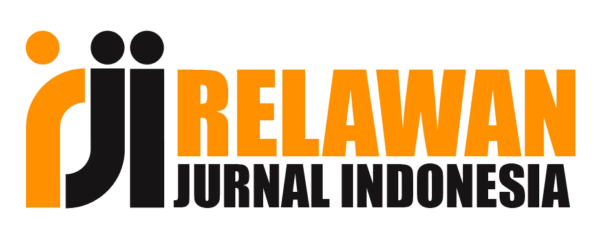Pengembangan dan Karakterisasi Tes Keterampilan Berpikir Kritis Materi Tekanan berdasarkan Teori Respon Butir
Abstract
Keterampilan berpikir kritis merupakan keterampilan yang harus dimiliki siswa pada abad 21. Dalam dunia pendidikan, keterampilan berpikir kritis siswa dapat diketahui melalui penilaian menggunakan alat ukur keterampilan berpikir kritis. Namun pada kenyataannya masih jarang sekali pendidik menyusun alat ukur yang dapat merangsang siswa untuk berpikir kritis. Alasan utamanya dikarenakan sulitnya mengkonstruksi dan menganalisis alat ukur keterampilan berpikir kritis karena membutuhkan waktunya yang cukup lama. Penelitian ini bertujuan untuk mengembangkan dan mengkarakterisasi tes keterampilan berpikir kritis berdasarkan teori respon butir. Metode penelitian yang digunakan adalah metode pengembangan. Tes dikonstruk berdasarkan 16 subskill dari 6 aspek keterampilan berpikir kritis pada materi tekanan. Partisipan dalam penelitian ini yaitu 151 siswa di enam SMP di Lembang. Analisis data dalam peneltian ini berdasarkan teori respon butir dan dibantu dengan software IRTPRO4.2 Student. Hasil analisis dari kurva karakteristik tes menunjukkan bahwa parameter kesukaran ( terentang antara -0,15 sampai 0,92 dengan indeks kesukaran termasuk dalam kategori sedang dan parameter daya pembeda (a) benilai 0,49 yang berarti tes memiliki daya pembeda yang baik. Perpotongan antara total fungsi informasi dan SEM (standard error measurement) berada pada rentang -1,10 sampai 1,7. Hal ini berarti, keseluruhan tes ini dapat digunakan untuk mengukur kemampuan berpikir kritis dari tingkat kemampuan rendah (dibawah rata-rata) sampai kemampuan tinggi (diatas rata-rata).
Kata kunci: keterampilan berpikir kritis, pengembangan dan karakterisasi, teori respon butir
ABSTRACK
Critical thinking skills are the skills students must have in the 21st century. in the world of education, students' critical thinking ability can be seen through assessment use the critical thinking skill test. But in reality it is rare the educators to prepare a measurement tool that can stimulate students to think critically. The main reason because is difficult in building and analyzing critical thinking skills because it takes a long time. This study aims to develop and characterize critical thinking skills tests based on item response theory. The research method used is a method of development. The test is built on the basis of 16 subskill of 6 aspects of critical thinking skills in the pressure material. Participants in this study were 151 students in six middle schools in Lembang. The analysis of the data of this research is based on item response theory and assisted by using software IRTPRO4.2 Student. The result of analysis from characteristic curve of the tests show that the parameter of level of difficulty (b) between -0.15 to 0.92 with index of level of difficulty included in the medium category and parameter of discriminating power (a) value of 0.49 which means that the test has a good category. The information function amount 18,83 and the intersection between the total information function and SEM (standard measurement error) is in the range -1.10 to 1.7. This means, the test is valid and it can be used to measure the critical thinking ability of low levels (below average) until the high ability levels (above average).
Keywords: critical thinking skill, development and characterization, item response theory
Full Text:
PDF (Bahasa Indonesia)References
Awopeju, O.A. & Afolibi E.R.I. (2016). Comparative Analysis of Classical Test Theory and Item Response Theory Based Item Parameter Estimates of Senior School Certificate Mathematics Examination. European Scientific Journal October 2016 edition, 12 (28). 263-284.
Bybee, R.W. & Fuchs, B. (2006). Preparing the 21st Century Workforce: A New Reform in Science and Technology Education. Journal Of Research In Science Teaching , 43. 349-352.
Edwards, M.C. (2009). An Introduction to Item Response Theory Using the Need for Cognition Scale. Social and Personality Psychology Compass, 3 (4). 507-529.
Ennis, R.H. (1993). Critical Thinking Assessment. USA: The Ohio State University.
Facione, P.A. (2013). Critical Thingking: What It Is and Why It Counts. California : The California Academic Press.
Fatkhudin, A., Surarso, B., Subagio, A. (2014). Item Response Theory Model Empat Parameter Logistik Pada Computerized Adaptive Test. Jurnal Sistem Informasi Bisnis, 02. 121-129.
Hambleton, R.K., Swaminathan, H & Rogers, H.J. (1991). Fundamental of Item Response Theory. Newbury Park, CA: Sage Publication Inc.
Hendryadi. (2014). Content Validity (Validitas Isi). Teorioline Personal Paper, (01). 1-5.
Huang, Y.M., Lin, Y.T., & Cheng, S.C. (2009). An adaptive testing system for supporting versatile educational assessment. Computers & Education 52. 54-67.
Nurcahyo, F.A. (2016). Aplikasi IRT dalam Analisis Aitem Tes Kognitif. Buletin Psikologi, 24 (2). 64-75.
Retnawati, H. (2014). Teori Respons Butir dan Penerapannya. Yogyakarta: Nuha Medika.
Rofiah, E., Aminah, N.S., Ekawati, E.Y. Penyusunan Instrumen Tes Kemampuan Berpikir Tingkat Tinggi Fisika Pada Siswa SMP. Jurnal Pendidikan fisika, 1 (2). 17-22.
Tiruneh, D.T., Cock, M.D., Weldeslassie, A.G., Elen, J., Janssen, R. (2017). Measuring Critical Thinking in Physics: Development and Validation of a Critical Thinking Test in Electricity and Magnetism. International Journal of Science and Mathematics Education, (15). 663-682.
Tiruneh, D.T., Vanburgh, E., Elen, J. (2014). Effectiveness of Critical Thinking Instruction in Higher Education: A Systematic Review of Intervention Studies. Higher Education Studies, 4 (1). 1-17.
Weinhardt, J.M., Morse, B.J., Chimeli, J., Fishe, J. (2012). An item response theory and factor analytic examination of two prominent maximizing tendency scales. Judgement and Decision Making, 7 (5). 644-658.
Zamanzadeh, V., Ghahramanian, A., Rassouli, M., Abbaszadeh, A., Alavi-Majd, H., & Nikanfar, A.R. (2015). Design and Implementation Content Validity Study: Development of an instrument for measuring Patient-Centered Communication. Jurnal of Caring Sciences, 4 (2). 165-178.
DOI: https://doi.org/10.17509/wapfi.v4i2.20181
Refbacks
- There are currently no refbacks.
Copyright (c) 2019 Revi Novia, Taufik Ramlan Ramalis, Ridwan Efendi

This work is licensed under a Creative Commons Attribution-ShareAlike 4.0 International License.
The Journal Wahana Pendidikan Fisika http://ejournal.upi.edu/index.php/WapFi/ is licensed under a Creative Commons Attribution-ShareAlike 4.0 International License
The Journal WaPFi (Wahana Pendidikan Fisika).
All rights reserverd. pISSN 2338-1027 eISSN 2685-4414
Copyright © Faculty of Mathematics and Science Education (FPMIPA) Universitas Pendidikan Indonesia (UPI)










